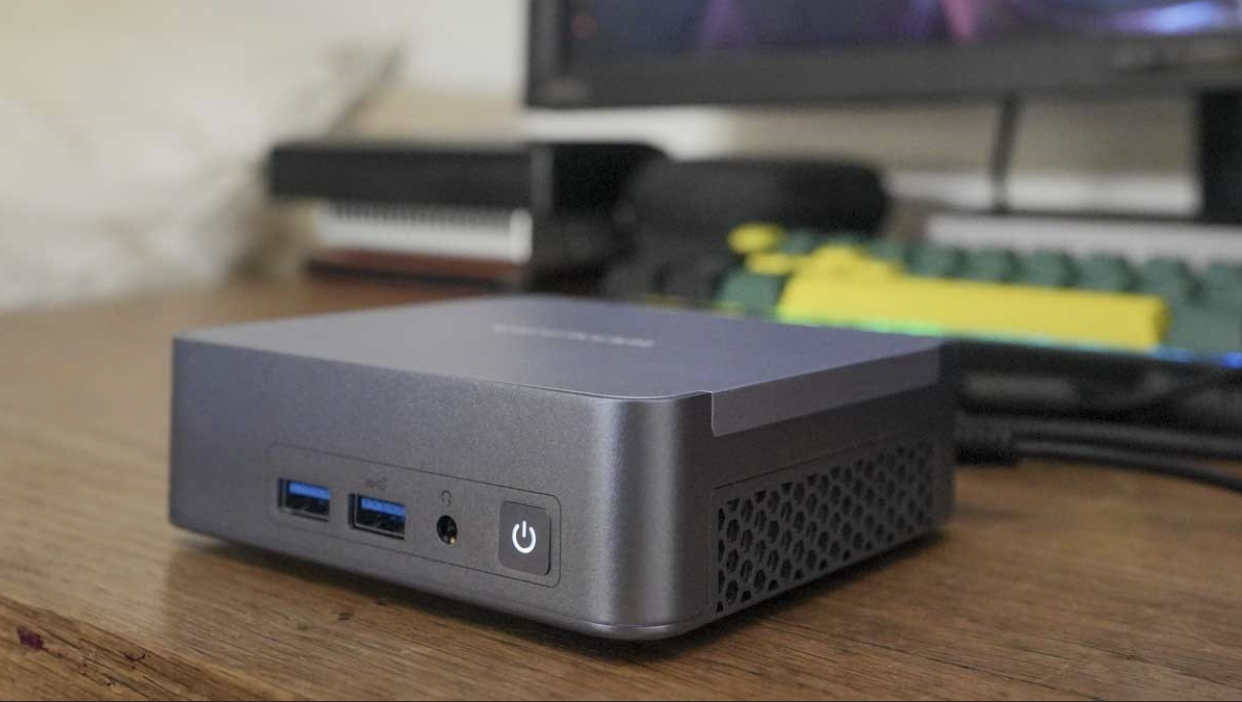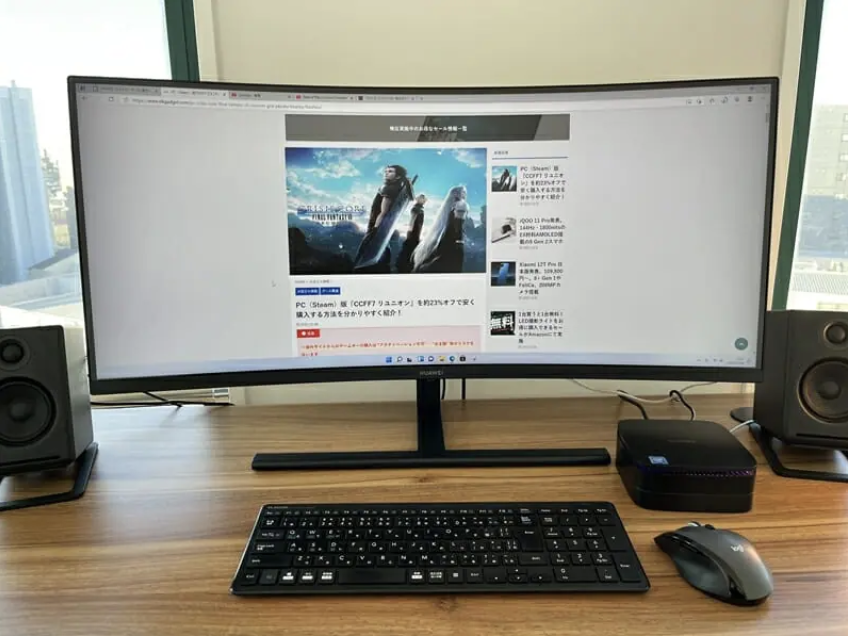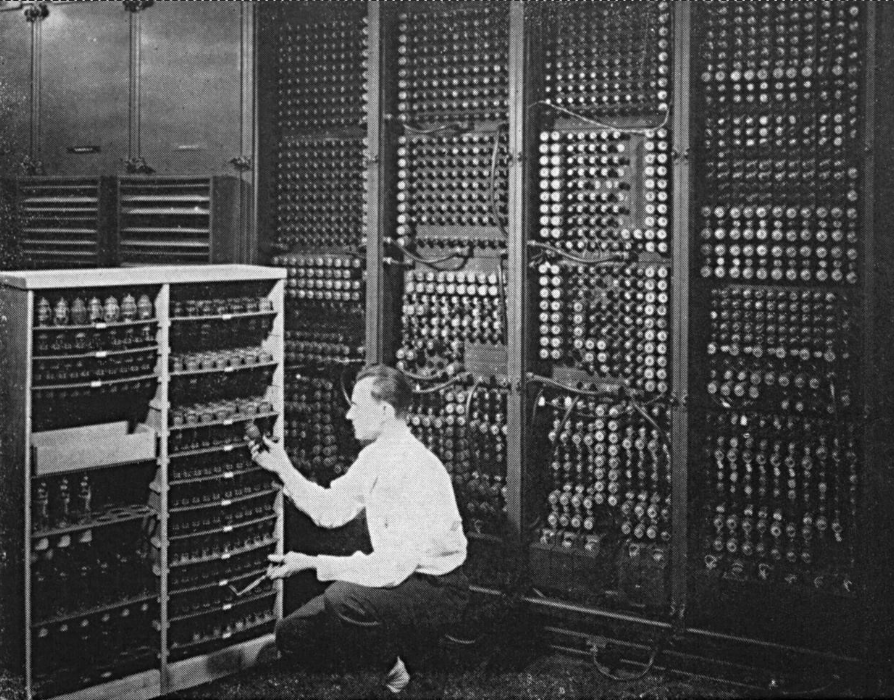Small but Mighty? Mini PCs: A Modern Design Approach to Computers
When thinking about computers, our perception of what they should look like has evolved over the years. From clunky desktops to sleek laptops, every generation has seen shifts in form, function, and design. Many variables, such as storage, space, RAM capacity, visual specifications, etc., play into our preferences for what we choose to buy and use.
I remember the first time I went to buy my laptop, I looked a lot at the price tag without understanding what everything else, such as RAM, Processor Type, or Disk Size, meant in the cost. I liked laptops because they were compact and easy to transport, whereas the desktops were huge and heavy, so they felt more tedious when moving from apartment to apartment or even room to room. We later got a desktop for family use, but the box was big and annoying to have in the way, either on the desk or at our feet. With my little brother graduating from high school this year, we started looking for computer options for him and discovered the mini PC. It felt like the best option when considering cost, functionality, and space.
Figure 1: A mini PC [1]
History of the Mini PC
Mini PCs have been around for several decades now, constantly progressing alongside all technology. Just like all computers, they have faced limitations in power, GPUs, storage, and connectivity. Through constant development and evolution of computers, the path for mini PCs has been created. With the emergence of laptops in the 1990s, a future for more compact computers was in sight. The 2000s followed with more efficient processors, faster data, and more wireless connectivity options. In the 2010s, we began to see mini PCs as an alternative option to desktops and laptops. Fast forward to the 2020s, where we now have super compact and powerful mini PCs. [2]
Figure 2: mini PC set up [3]
Cost Efficiency
Mini PCs are comparatively cheaper than their desktop counterparts. They typically range from $100 to $300 in price. Some of the main reasons for that are due to their smaller size, there are fewer components, and they aren’t typically able to be upgraded, so they must be replaced later. They can’t be personalized like standard desktops, so you can’t choose the best components to equip them with, so costs are cut significantly, but so is capability. Laptops are similar in that way as well, where you may be able to upgrade storage but not the graphics card. For those who don’t care too much about graphics cards or upgrading parts, having a cheaper, more compact option is ideal.
Functionality and Performance
Mini PCs can handle everyday tasks surprisingly well, from word processing, web browsing, media streaming, to even some coding or light photo editing. Many include SSDs and support dual-monitor setups. While not typically used for gaming, models are being released that support it. People may still prefer the standard desktop option since they can choose their specs, but there are models of mini PCs that are also viable options. [4] Standard desktops still may have higher performance capabilities, but mini PCs are still great for a casual user or even a standard business setting.
Figure 3: Early Vacuum tube computer [5]
Compact Design
We have gone from computers filling up an entire room to now being able to hold them in one hand. Mini PCs are the perfect size for small spaces, whether that be an office or a bedroom. Minimalism is a loved aesthetic by people, and a mini PC complements it perfectly. It blends in easily on a shelf, desk, or can even be hidden. They all, for the most part, have similar sizes and shapes. They are designed to be discreet, which allows one to work with less clutter and fewer disturbances.
Takeaways
I am amazed by how quickly mini PCs have become so compact. Everyone has their preferences, and I am biased towards laptops, but a mini PC is great for those who like a compact, cost-effective, and functional desktop option. It is good to learn about the wide variety of specifications that one can choose from when looking at computers to buy or even build. It is interesting to think about what other tech has evolved to be more compact and pocket-sized over the years, as well as what more I would like to see follow that path. What more will we soon be able to fit in our bags and carry around simply? Design evolution takes time, but it’s accelerating, and we get to be a part of shaping what comes next.
References
[1] Clark, Steve. “Best Mini PC of 2025: We Benchmarked the Top Mini Computers for Every Budget.” TechRadar, 15 Sept. 2022, www.techradar.com/best/mini-pcs.
[2] “Full Review 2025: History and Evolution of Mini PC.” GEEKOM, 24 Dec. 2024, www.geekompc.com/mini-pc-history-and-evolution/?srsltid=AfmBOopNqlaajcbDqQN_O0nv8RvgKyqjO4AbzJ9kvGctxZXEjrWpXdR0.
{3] “Home.” [Buying Guide] How to Choose a Mini PC? | Blackview Blog, www.blackview.hk/blog/how-to/choose-a-mini-pc. Accessed 28 July 2025.
[4] Bickham, Al. “Best Mini Pcs in 2025: The Compact Computers I Love the Most.” PC Gamer, PC Gamer, 20 Aug. 2024, www.pcgamer.com/hardware/gaming-pcs/best-mini-pcs-for-gaming/.
[5] “Computer.” Wikipedia, Wikimedia Foundation, 28 July 2025, en.wikipedia.org/wiki/Computer.
To cite this article:
Cortes, Joselyn. “Small but Mighty? Mini PCs: A Modern Design Approach to Computers.” The BYU Design Review, 6 August 2025, https://www.designreview.byu.edu/collections/small-but-mighty-mini-pcs-a-modern-design-approach-to-computers.








